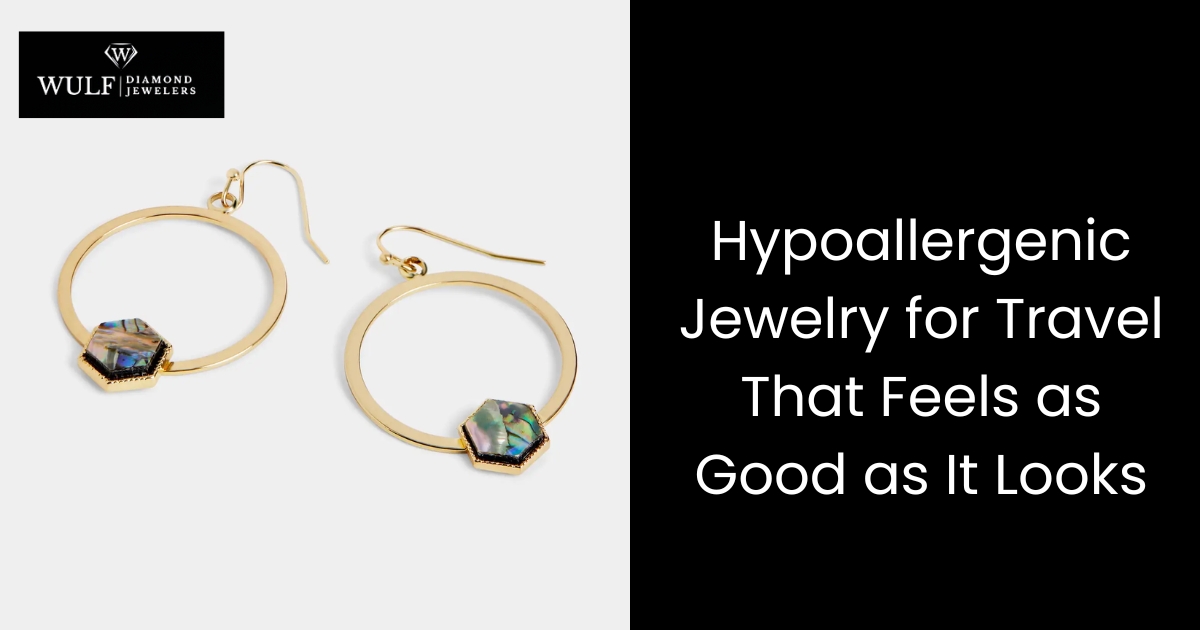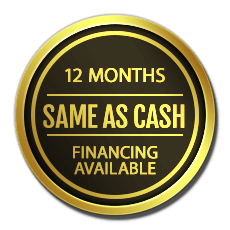Even if you don’t have any solid gold bars, gold coins, or bullion, you can still make a pretty penny from your gold rings, necklaces, brooches, and even gold scrap and old jewelry.
No matter its form, gold is always a terrific investment because it’s one of the most precious metals in the world.
In other words, someone will always be happy to buy your gold jewelry – but that doesn’t mean they’ll give you good money for it. In fact, rushing to sell your gold jewelry is a sure way to get ripped off.
That’s why before selling any precious metals you have, we recommend learning a bit more about how it works.
For instance, what drives global gold prices? What determines the value of gold items? Is it better to sell gold online or in person?
We’ll answer those questions and more in this guide. You’ll also learn:
- The definition of spot price, bid price, ask price, and premiums
- What can affect the price of pure gold and how it affects you as a gold seller
- The absolute best times for selling gold jewelry
- Tips on selling gold jewelry
Let’s dive in!
P.S. Don’t have time to wait? If you need quick cash right now, we offer some of the best prices for gold in Northwest Indiana. Visit our shop and we’d be glad to give you cash for gold!
4 Essential Terms to Know Before Selling Gold Jewelry
A word of warning: there is no shortage of fraudsters and dishonest online gold buyers who’d love to take advantage of your lack of knowledge about selling gold.
That’s why it’s so important to do your homework before you even try to sell gold jewelry.
Here are some essential terms related to gold prices that you should familiarize yourself with before moving forward:
- Spot Price
This is one of the most basic terms related to selling gold. It refers to the current price of gold in the market, which is determined by supply and demand. The gold spot price changes constantly and is usually quoted in U.S. dollars per troy ounce.
Why do you need to know this if you’re selling gold jewelry? Because the spot price is used as a reference point to calculate the value of gold jewelry.
For example, if the current spot price of gold is $1,000 per ounce, and you have a bracelet that weighs 10 grams (or 0.32 troy ounces), then your bracelet is worth approximately $320 ((10 grams x 1,000)/31.1).
Imagine if you weren’t aware of the spot price of gold, and someone offered to buy your bracelet for $250. You’d be leaving a lot of money on the table!
- Bid Price
Let’s say you want to try selling gold online. The bid price is the highest price that online gold buyers are willing to pay for your gold.
In order to calculate the bid price, gold buyers take into account the spot price of pure gold, as well as the purity of the gold in your pieces.
For example, if the spot price of gold is $1,000 per ounce and you have 14 karats (which is 58.3% pure), then the bid price for your piece would be $583 per ounce ((1,000 x 0.583)/31.1).
Of course, the purity of your gold is just one factor that determines the bid price. Other factors include the weight of your gold and the current market conditions, all of which are considered by gold buyers, too.
Not familiar with gold purity? Here’s a quick guide to gold karats.
- Ask Price
The ask price is the lowest price that a seller, aka you, is willing to accept for their gold. In other words, it’s the opposite of the bid price.
Whether you’re selling a gold bracelet, gold watches, heavy gold earrings, or any piece, you’ll be basing your ask price on both current gold spot prices and how much you feel is the fair amount.
For example, let’s say the spot price of gold is $1,000 per ounce, and you have a bracelet that weighs 10 grams and is 18 karats (which is 75% pure). Based on those factors, the ask price for your bracelet could be $750 ((10 grams x 1,000)/31.1).
However, it’s important to keep in mind that the ask price is just a starting point. You can always negotiate with gold buyers to get a higher price for your gold items.
- Premiums
If you’re planning to sell your gold, it’s important to be aware of premiums, too. A premium is the amount of money that gold buyers charge on top of the spot price of gold.
Why does this happen? It’s because gold buyers have to cover the costs of melting and refining your gold jewelry, as well as the fees associated with running their business.
For example, let’s say the current spot price of gold is $500 per ounce. A buyer may charge a 5% premium, which would make the total price of your gold $525 per ounce ((500 x 0.05) + 500).
It’s also important to note that premiums can vary depending on the type of gold you’re selling. For example, solid gold coins typically have higher premiums than if you’re selling gold bars because they’re more difficult to melt down and refine.
You may be wondering, does this apply to other gold pieces like rings and bracelets?
The answer is yes! In general, the more intricate your item is, the higher the premium will be. That’s because it takes more time and effort to melt down and refine complex pieces than it is to simply buy gold jewelry.
Of course, this still depends on your agreement with the buyer. Some buyers may be willing to pay a higher premium for your gold jewelry if it’s in good condition and they think they can sell it for a profit.
What makes the price of gold go up and down?
Now that you’re familiar with gold-selling lingo, let’s talk about the price itself.
The price of gold never stops changing, which means the value of your gold jewelry keeps going up and down, too.
That’s why it’s so hard to predict when you should sell your gold.
The good news is, that understanding what drives the price of gold can help you make a wise decision about when to sell.
If you’re not familiar with the gold market, the jargon surrounding gold prices can be a bit confusing at first — but don’t worry. We’ll try to explain it as simply as possible below.
Here are six major factors that influence the price of gold, aka how much money you get when you sell your gold jewelry:
1. Central bank policies can make gold prices fluctuate
The decisions made by central banks — such as the U.S. Federal Reserve, the European Central Bank, and the Bank of Japan — can have a big impact on gold prices, and consequently, the value of your gold pieces.
As an example, let’s say the Fed raises interest rates. These rates apply to things like mortgages, credit cards, and loans.
As a result of higher interest rates, the value of the U.S. dollar goes up. And since gold is priced in dollars, a strong dollar means the price of gold will go down. So if you sell when the dollar is strong, you’ll get less money for it.
On the other hand, let’s say the Fed lowers interest rates. This makes the dollar weaker, which in turn drives up the price of gold. So if you offer your gold rings and necklaces to an online gold buyer during this time, you could get a higher price for them.
2. The law of supply and demand affects gold prices, too
The basic law of Economics 101 says that when there’s more demand for something than there is supply, the price goes up.
The same goes for gold. If more people want to buy gold than there is available (i.e. the demand is higher than the supply), then the price of gold will increase.
The opposite is also true. If there’s more gold available than people want to buy (i.e. the supply is higher than the demand), then the price of gold will go down.
Here are some indicators that demand for gold might be increasing:
- Central banks are buying gold
- Investors are buying gold ETFs (exchange-traded funds)
- Jewelry demand is increasing in China and India
Here are some indicators that supply might be increasing:
- Gold miners are producing more gold
- Investors are selling gold
- The price of gold is high, so scrap gold is being sold
Sounds complicated? A quick online search can help you keep tabs on these factors and predict changes in the gold market. Bookmark financial news sites like Investing.com or CNN Money, and set up Google alerts for keywords like “gold prices” or “gold demand.”
3. Inflation can make gold jewelry prices go up… or down
Inflation is when the prices of goods and services go up over time. In simple terms, let’s say your $10 coffee today costs $11 tomorrow. That’s inflation because you have the same $10 but it can’t buy as much anymore.
This doesn’t just happen with coffee. It happens with everything — including gold.
In general, inflation drives up the price of gold. That’s because as the prices of goods and services rise, people want to hold on to their money (which is losing value) and buy gold, which holds its value better.
So if you’re planning to sell your gold jewelry during a time of high inflation, you could get a higher price for it.
4. Economic uncertainty usually means the price of gold goes up
When the economy is uncertain, people tend to buy gold as a way to protect their money. That’s because gold tends to hold its value better than other investments like stocks and bonds, which can go down in value when the economy is struggling.
So if there’s been a lot of economic news lately that’s got you worried, it might be a good time to sell your gold. Some examples of news to watch out for are:
- High unemployment rates
- A recession or financial crisis
- Natural disasters
- Tensions between countries
- Stock market crashes
Any of these events could lead to an increase in the price of gold, and consequently, a higher payout for your precious metals.
5. The exchange rate between the U.S. dollar and other currencies can impact gold prices
The price of gold is affected by the exchange rate between the U.S. dollar and other currencies, like the euro or Chinese yuan.
Here’s how it works: let’s say the value of the euro goes down relative to the dollar. Since gold is priced in dollars, this means it takes more euros to buy the same amount of gold. So if you live in Europe and want to buy gold, you’ll have to pay more for it.
On the other hand, if the value of the euro goes up relative to the dollar, then it will take fewer euros to buy the same amount of gold. So if you live in Europe and want to buy gold, it will be cheaper.
The same goes for other currencies like the Chinese yuan. If the yuan becomes stronger relative to the dollar, then gold will be cheaper for Chinese buyers, and vice versa.
How can you take advantage of this when you have some gold bracelets and other precious metals to sell? If the dollar is strong relative to other currencies, then it might be a good time to sell to a reputable online gold buyer outside of the United States.
6. The price of gold affects how much people are willing to pay for it
Gold jewelry is not just precious due to its gold content — it’s also a work of art, and the related gold price reflects that. When the price of gold is high, gold jewelry tends to be more expensive, and people are less likely to buy it.
On the other hand, when the price of gold is low, gold jewelry tends to be cheaper, and people are more likely to buy it.
So if you’re looking to get the best price for your gold jewelry, it’s important to keep an eye on the price of gold itself. If the price is high, you might want to wait to sell, and if the price is low, now might be a good time to sell.
The 8 Best Times for Selling Your Gold Jewelry
At this point, you’re now more informed than many gold sellers. You know that the spot price is just one factor to look at when you’re selling your gold and that there are other things like the US dollar, inflation, and even economic issues that can affect the price you get for your old gold jewelry.
But aside from that, what if you could time your sale perfectly? Here are eight of the best times for selling precious metals like gold:
1. Sell gold when prices are rising
This is one of the most obvious times to sell, but it’s also one of the hardest to time. After all, gold prices could start rising tomorrow and continue going up for weeks or even months.
But if you’re patient and watch the market closely, you can usually spot when gold prices are about to start rising. As we mentioned earlier, look for things like a change in the direction of the US dollar, increasing tensions in the Middle East, or even a stock market crash.
2. Try selling gold when the US dollar is falling
The US dollar and gold prices have an inverse relationship, meaning that when one goes up, the other usually goes down. So, if you see that the US dollar is starting to fall, it’s a good time to sell gold jewelry.
You don’t even need to research everything manually. Many apps and sites allow you to set up currency alerts that will notify you when the US dollar falls or rises by a certain amount.
3. Sell gold when you need cash in a hurry
Sometimes, you just need cash fast. Maybe you have an unexpected bill or you’re planning a last-minute vacation. Whatever the reason, if you need money quickly, putting up your gold items for sale is a smart idea.
You have several options for selling your gold quickly. For instance, you could use online gold buyers or a precious metals buyer. You can also sell your gold to a local jewelry store or pawn shop.
Because there are so many options for selling gold quickly, it’s important to compare prices and services before you sell. That way, you can be sure you’re getting the best price possible.
4. When you don’t wear your gold jewelry anymore
Gold pieces are beautiful, but not everyone wants to wear them all the time or at all. If you have gold items that you never wear, you may want to make money off it instead of letting it collect dust in your jewelry box.
And, you don’t even need to wait for the perfect time to sell. If you’re not attached to your gold and you’re ready to part with it, go ahead and sell it whenever is convenient for you.
5. When you’re holding damaged or unusable gold
Maybe you have a piece of gold jewelry that’s been broken or is too damaged to wear. Or, maybe you have gold coins that are bent or scratched. Whatever the case may be, if you have unusable precious metal like gold, you can still sell it for cash.
Of course, you won’t get as much money for your gold if it’s damaged, but it’s still worth something. And, it’s better than letting your unusable gold take up space in your home or jewelry box.
6. When you notice inflation creeping in
Earlier, we already discussed what inflation means and how it can affect the price of gold. It’s also a good time to sell gold.
That’s because, as we mentioned, gold is a hedge against inflation. So, if you notice warning signs like your grocery bills are going up, gas prices are rising, or your salary isn’t going as far as it used to, it may be time to sell gold.
7. When you want to upgrade your jewelry collection
Even if you love your gold pieces, there may come a time when you want to upgrade to something new. Maybe you want a bigger diamond ring, a stylish rose gold band, or a nicer gold necklace.
Whatever the case may be, if you want to upgrade the contents of your jewelry box, selling your old gold jewelry is a great way to get the money you need.
8. Right before major holidays and seasons
Finally, another good time to sell gold is right before popular holidays and seasons. That’s because people are usually shopping for gifts during these times and they may be willing to pay more for your gold.
Some of the best times to sell gold are right before Mother’s Day, Father’s Day, Valentine’s Day, and Christmas. You may also be able to get a good price for your gold if you sell it during the summer months, as many people take vacations during this time and may be looking to spend money on jewellery for their trips.
Related Read: Smart Tips for Selling Your Gold Jewelry in Northwest Indiana
7 Simple Tips for Getting More Money for Your Gold Jewelry
No matter when you decide to start selling gold online or through other buyers, there are a few key things you can do to make sure you get the most money for your pieces. By keeping the following tips in mind, you can help to ensure that you receive a fair price for your gold:
1. Know the current value of gold.
We can’t emphasize this enough: never sell your gold pieces without knowing the current value of pure gold. The price of pure gold fluctuates daily, and you want to make sure you receive a fair price for your pieces.
One way to stay up-to-date on the current gold market is to check online resources or ask a local and reputable jeweler what they would pay for your gold bracelet, ring, etc.
2. Determine the purity of your gold jewelry.
How much pure gold your item has will affect the price you receive for it. The higher the purity, the more money you’ll likely get for your pieces.
However, determining the purity of your gold can be tricky and is best done by a professional. To err on the side of caution, we invite you to go visit our shop and we can test whether your pieces actually have pure gold, or if they’re actually gold-filled, fine or costume jewelry, fashion jewelry, or anything else.
3. Accurately weigh your gold jewelry.
Aside from determining the purity of your gold, we can also help you determine how much your gold weighs. This is important because you’ll be paid based on the weight of your jewelry’s gold content, and you want to make sure you’re getting credit for every last gram.
4. Find a trustworthy buyer who pays fair prices.
There are a lot of places that will buy your gold, but not all of them are reputable or known for paying fair prices. This is especially true if you’re dealing with an online gold buyer you don’t know or you’ve never met. Once you’ve found a few potential buyers, do your research to make sure they’re reputable and have a proven reputation for valuing pieces.
Related Read: How Do Jewelers Test Gold?
5. Be prepared to negotiate.
When it comes to selling your gold items, remember that you’re in control. If you don’t like the first offer you receive, don’t be afraid to negotiate or walk away from the deal.
6. Beware of scams.
Unfortunately, there are a lot of people out there who are looking to take advantage of those selling gold jewelry. Be aware of common scams, such as:
- Buyers who claim to use a secret formula to test the purity of your gold
- People who say they’ll pay you more if you send your gold to them first
- People who ask you to sign over the deed to your gold before they pay you
- Any person claiming to be a professional gold buyer who can’t show proof that they’re licensed
If someone is trying to pressure you or rushing you into a decision, be wary. Trust your gut and don’t do business with someone if something doesn’t feel right.
7. Know your rights.
When you sell your gold jewelry, you have certain rights as a consumer. Familiarize yourself with these rights so you can make sure you’re being treated fairly throughout the process.
For instance, you have the right to:
- A written estimate of the value of your gold jewelry
- A second opinion if you’re not sure about the first estimate you receive
- A breakdown of how the buyer arrived at the quoted price for your gold
- Cash payment or a check from a reputable source
- Ask questions and get answers in terms you can understand
- Feel comfortable and safe during the transaction
By keeping these rights in mind, you can help to ensure that you’re getting a fair deal when selling your gold jewelry.
Need help selling or pricing your gold jewelry?
Whether you’re looking to get the most money for your gold or you’re just wanting to be sure you’re being treated fairly, we can help. At AaLND Diamond Jewelers, we pride ourselves on being honest and straightforward with our customers.
We can help you with everything from testing the purity of your gold to determining how much it weighs. We can also give you a written estimate of the value of your gold so you know what to expect.
If you’re ready to sell, we’re confident you’ll be happy with the prices we offer here at Wulf Diamond Jewelers.Our reputation speaks for itself, so contact us today to get started!





